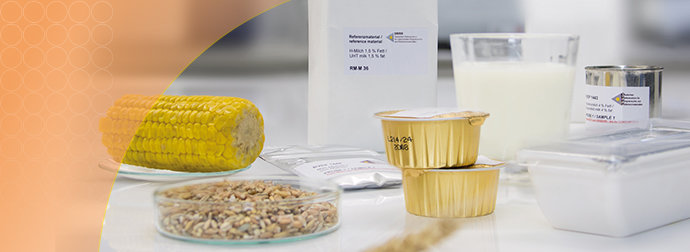
Recent news in Food & Feed Analysis
- Home
- /
- Proficiency testing: 6 things...
Proficiency testing: 6 things to look for when choosing a PT provider

Proficiency testing (PT) is an important element of quality assurance in laboratories. There are many providers which organize such ring trials. Here’s what to look for when choosing a proficiency test provider.
According to ISO standard, proficiency testing is specified as a laboratory performance assessment, involving inter-laboratory comparisons (ILC), where the same samples are analyzed in various laboratories. Certified laboratories are required to regularly participate in such ring trials for any analyte under the scope of their accreditation. To participate, laboratories need to register with a proficiency test provider (PT provider). Since there are many of them, the international database EPTIS may be a first source of information. The following aspects may help you finding the right provider:
1. ISO accreditation
ISO/IEC 17043 accreditation is a key quality criterion for PT providers. Moreover, this accreditation is legally required in many countries.
2. Used sample material
Ideally, PT providers should supply naturally contaminated materials (NCMs). In such “real world samples”, the analyte is naturally embedded in the matrix, which allows a more realistic assessment than in artificially fortified samples. Homogeneity of the sample is another determining factor for the quality of the results. Our partner Trilogy India is now offering proficiency tests for various parameters and matrices, exclusively using naturally contaminated materials and homogeneous samples.
3. Parameter selection
The matrices, analytes and concentrations applied should fit to the routine laboratory practice. For example, if the ring trial’s concentrations differ marginally from the concentrations the laboratory usually works with, the results may only be significant to a limited extent.
4. Test design
Methods used by PT providers may vary widely, for example with regard to the number of samples to be analyzed, the method of data collection, the number of participants or the performance assessment criteria. Laboratories should make sure that the methods of the proficiency test are relevant for their work and comply with requirements of customers, accreditation bodies or authorities.
5. Communication
Is all necessary information easily available and understandable? Will the results be provided in a timely manner? How much support is provided? These are questions that are best answered at an early stage.
6. Requirements
Last but not least, laboratories should check if certain conditions must be met for participation. For example, some providers require laboratories to participate in at least two proficiency tests per year, or to repeat the tests according to a specific schedule.
